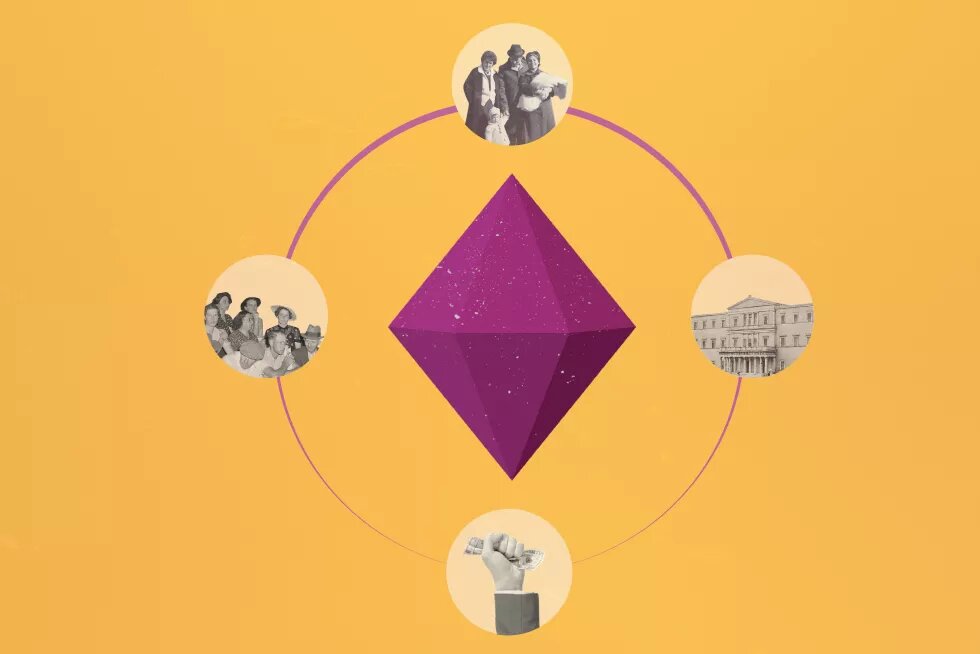All countries care, but in different circumstances, in different contexts (cultural, political, historical, social, economic) and using different words. To understand how this happens, feminist economic thought suggests that we use the so-called 'care diamond'.

This diagram explains how care is provided in all societies through four main pillars: the family, the community (including religious and non-profit organisations), the market and the state. Almost all of the care we provide or receive emanates from one of these institutions, and depending on the time or place we are in at any given time, some take on a more central role and character than others.
For example, Northern Europe has (or rather had) relatively strong state institutions and policies that provide care 'from the top' through high benefits, adequate pensions and organised care for the elderly and other vulnerable groups. In contrast, Southern Europe relies more on the institution of the family and the community, as has become daily evident since the financial crisis of 2008 and beyond.
Moreover, each institution is characterised by different logics and practices. The market, for example, has in many countries taken over an increasing number of forms of care, from hiring household staff to seeing a professional psychologist, and in many cases is replacing inadequate public health systems. At the same time, however, the market is imposing its own criteria, such as emotional distance and cost-cutting at all costs, which not only does not go hand in hand with the values of care, but most often undermines them (consider, for example, the poorly paid, invisible work in exhausting conditions of migrant women caring for the elderly).
What would the diamond of care show us about the Greek case and what can we learn from the 'diamonds' of other countries?